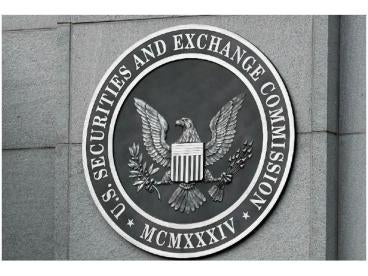On December 18, the Securities and Exchange Commission voted to propose new rules that would expand the exemption from registration under the Securities Act of 1933 provided by Regulation A to include an exemption for up to $50 million of securities sold during a 12-month period in accordance with the proposed rules. This proposed new exemption is sometimes referred to as “Regulation A+.” Reliance upon Regulation A is, and reliance upon so-called Regulation A+ would be, subject to compliance with various requirements and conditions.
Regulation A currently permits unregistered offerings of securities having a value of up to $5 million in a 12-month period, including up to $1.5 million of securities offered by selling security holders. Among other things, Regulation A requires an issuer to submit an offering statement (which includes an abbreviated form of prospectus known as an offering circular) to the SEC as a condition to reliance upon the Regulation A exemption. Offering statements for Regulation A must comply with the form and content requirements of Form 1-A and must be “qualified” by the SEC. Securities offered pursuant to Regulation A are also subject to state “blue sky” registration and qualification requirements. As a result of the limited offering amount and compliance burdens associated with offerings under Regulation A as it currently exists, Regulation A is rarely used.
Section 401 of the Jumpstart Our Business Startups (JOBS) Act (adding Section 3(b)(2) of the Securities Act) requires the SEC to adopt rules that would have the effect of updating and expanding Regulation A by exempting from Securities Act registration requirements up to $50 million of securities offered within a 12-month period, requiring issuers who offer securities that are exempt under Regulation A+ to file annual audited financial statements and imposing such other restrictions and conditions as the SEC determines are appropriate. The SEC’s proposed rules would implement that mandate by creating two “tiers” of Regulation A offerings: (1) offerings under Regulation A as it currently exists (i.e., up to $5 million of securities, including no more than $1.5 million of securities offered by selling security holders, in any 12-month period) (Tier 1); and (2) offerings of up to $50 million of securities, including no more than $15 million of securities offered by selling security holders, in any 12-month period (Tier 2). Securities sold in either a Tier 1 or a Tier 2 offering would not be “restricted securities” for purposes of the Securities Act.
The proposed rules would permit eligible issuers seeking to offer securities under either Tier 1 or Tier 2 to submit draft offering statements to the SEC on a non-public basis for review prior to filing; permit use of “test the waters” solicitation materials both before and after the filing of the offering statement; and modernize the offering process, including by requiring electronic filing of offering materials and permitting issuers and intermediaries to satisfy prospectus delivery requirements under an “access equals delivery” model. Tier 2 offerings would be subject to additional requirements under the proposed rules. Specifically, in Tier 2 offerings, investors would be limited to purchasing an amount of securities that does not exceed 10 percent of the greater of the investor’s annual income or net worth; financial statements included in the offering circular would have to be audited; and the issuer would be required to file annual and semi-annual reports and current event updates that are similar to those of a public company until the issuer becomes eligible to exit Regulation A reporting requirements (generally, after completing reporting for the fiscal year in which the offering statement is qualified, so long as the securities covered by the offering statement are held by fewer than 300 persons). In the case of Tier 2 offerings, state securities laws (blue sky) requirements would be preempted. Tier 1 offerings would remain subject to state blue sky registration and qualification requirements. An issuer could elect to pursue a Tier 2 offering to achieve the benefits of blue sky preemption, even if it is offering less than $5 million of securities in a 12-month period.
As is currently the case, the Regulation A exemption would only be available to an issuer organized and having a principal place of business in the United States or Canada. The proposed rules would add to Regulation A’s existing issuer eligibility requirements (which disqualify SEC reporting companies, investment companies, blank check companies, issuers of certain interests in oil and gas rights or mineral rights, and issuers disqualified under “bad actor” provisions of Securities Act Rule 262) by disqualifying issuers that have not filed the ongoing reports required by the proposed rules and issuers that have been subject to an order by the SEC denying, suspending or revoking the registration of a class of securities pursuant to Section 12(j) of the Securities Exchange Act of 1934.
The proposal is subject to public comment for a period of 60 days from the date it is published in the Federal Register.
To view the complete text of the proposal, click here.





 i
i


